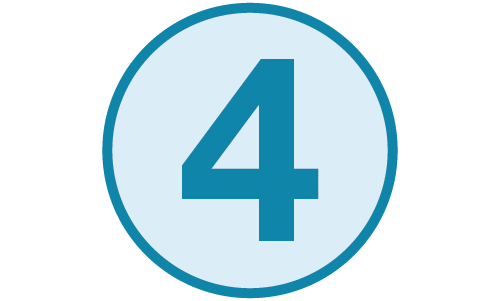Overview
Worldwide demand for metals and critical minerals is increasing rapidly in response to growing populations, technological advancement and the global shift towards a lower carbon economy.
Alberta, as a leader in responsible development, has the opportunity to be at the forefront of global mineral exploration and development. Renewing Alberta’s Mineral Future is a strategy and action plan for Alberta to capitalize on our potential to become a preferred producer and supplier of metallic and industrial minerals and mineral products. It outlines a path to unlock Alberta’s untapped mineral resource potential, helping to meet increasing demand while creating jobs and attracting investment.
Renewing Alberta’s mineral future
There are 6 key areas to support and achieve Alberta’s vision:
-
 Increase public geoscience
Increase public geoscienceAlberta must enhance its public geological knowledge base to equip our governments, the public, industry, land owners as well as Indigenous Peoples with better understanding of our resource potential.
-
 Enhance the fiscal and regulatory environment
Enhance the fiscal and regulatory environmentA clear, predictable and robust regulatory regime is key to boosting investor confidence, attracting investment and ensuring responsible resource development. The Government of Alberta is proposing updates to streamline Alberta’s legislation and regulations that oversee the life cycle of metallic and industrial mineral development.
-
 Promote responsible development
Promote responsible developmentAlberta is modernizing its approach to mineral development, which aims to provide industry with more flexibility for acquiring rights and making new investments, while we continue to uphold our province’s stringent environmental and health and safety standards.
-
 Advance opportunities for Indigenous Peoples
Advance opportunities for Indigenous PeoplesEnhancing the involvement of Indigenous Peoples and Indigenous entrepreneurs and businesses in mineral exploration and development – as well as along the mineral supply and value chains – allows for a better understanding of the opportunities, interests and potential concerns identified by Indigenous Peoples.
-
 Develop public awareness and a skilled workforce
Develop public awareness and a skilled workforceIncreased public awareness of the opportunities in the minerals sector will ultimately support the development of a skilled and educated labour force.
-
 Promote innovation and industrial development
Promote innovation and industrial developmentAlberta must encourage innovation, as well as advance the development and adoption of emerging technologies to help expand the scientific and industrial capacity for mineral production and manufacturing. This helps the province capitalize on opportunities along the full mineral supply and value chains.
Mineral resources in Alberta
Alberta has geological potential across the province for non-energy minerals, many of which have been identified as critical and strategic minerals – such as lithium in formation waters in west-central Alberta; vanadium, rare earth elements and titanium in oil sands waste streams; potash in eastern Alberta; uranium in southern and northeastern Alberta; and helium in southeastern Alberta.
Alberta’s current non-energy mineral production comes primarily from 23 active quarries producing salt, silica sand, limestone and other industrial minerals. There is a small amount of gold production reported as a by-product of sand and gravel operations.
In 2022, Alberta’s total helium production was 2.1 thousand cubic metres per day from 2 wells. In addition to projects currently under construction, several new projects have been announced, with testing underway to determine helium concentrations. These projects are expected to move forward later this decade.
Table 1: Common uses for minerals found in Alberta.
| Mineral | Common uses |
|---|---|
| Cobalt | Used in rechargeable batteries and superalloys |
| Diamonds | Used in manufacturing and jewelry |
| Iron | Used in manufactured steel, food storage cans, automobiles and heavy machinery |
| Lithium | Used primarily for lithium-ion batteries, greases and pharmaceuticals |
| Magnesium | Used in furnace linings for manufacturing steel and ceramics |
| Nickel | Used in magnets, rechargeable batteries, steel and superalloys |
| Potash | Primarily used in fertilizer |
| Rare earth elements (REE) | Primarily used in wind turbines, clean technologies, batteries and electronics |
| Titanium | Used in metal alloys and pigments |
| Uranium | Primarily used for nuclear fuel |
| Vanadium | Primarily used for catalysts, alloys and for energy storage |
| Zirconium | Used in high-temperature ceramics |
| Zinc | Used in steel plating, alloys, paints, rubber, cosmetics and pharmaceuticals |
Processing capacity
Alberta is home to leading refineries for critical minerals, including nickel, cobalt, and magnesium. Alberta as a gateway to the North provides opportunities for refining and mining services to mining operations in Northern Canada.
Legislation changes
The Mineral Resource Development Act, came into effect for brine-hosted mineral development on March 1, 2023 and for rock-hosted minerals on February 28, 2024, with the full proclamation of the act. The act aligns the Alberta Energy Regulator’s (AER) authority over minerals with its authority over other energy resources and helps enhance the fiscal and regulatory environment for metallic and industrial mineral development, supporting the second key area in Renewing Alberta's Mineral Strategy.
By creating a one-window approach, the legislation provides clarity and certainty for industry and investors, while protecting the best interests of Albertans by ensuring the safe, orderly and responsible development of the province’s mineral resources.
Previously, regulatory oversight for minerals was split among multiple entities in the province and there were no specific resource conservation statutes for metallic and industrial minerals, unlike for other natural resources in the province.
Combined with the Responsible Energy Development Act, the Mineral Resource Development Act provides legislative authority to the AER to regulate mineral resources and ensure their safe, efficient, orderly and responsible development.
The regulation to modernize Alberta’s approach to tenure for metallic and industrial minerals took effect on January 1, 2023.
News
- Re-energizing Alberta’s minerals sector (March 2, 2023)
- Advancing Alberta’s minerals strategy (December 21, 2022)
- Building a future for critical and rare earth minerals in Alberta (November 4, 2021)